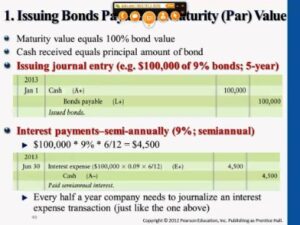Sức khỏe
What Is Double-Entry Bookkeeping? A Simple Guide for Small Businesses

The asset account “Equipment” increases by $1,000 (the cost of the new equipment), while the liability account “Accounts Payable” decreases by $1,000 (the amount owed to the supplier). You enter a debit (DR) of $1000 on the right-hand side of the “Equipment” account. To balance the accounts, you enter a credit (CR) of $1000 in the “Accounts Payable” account.
Regardless of which accounts and how many are involved by a given transaction, the fundamental accounting equation of assets equal liabilities plus equity will hold. This is a partial check that each and every transaction has been correctly recorded. The transaction is recorded as a “debit entry” (Dr) in one account, and a “credit entry” (Cr) in a second account. The debit using social media to compete in online contests entry will be recorded on the debit side (left-hand side) of a general ledger account, and the credit entry will be recorded on the credit side (right-hand side) of a general ledger account. If the total of the entries on the debit side of one account is greater than the total on the credit side of the same nominal account, that account is said to have a debit balance. The likelihood of administrative errors increases when a company expands, and its business transactions become increasingly complex.
What Is the Basic Rule of Double-Entry Bookkeeping?
Some types of mistakes will cause the system to be out of balance; as a result, the bookkeeper will be alerted to a problem. The inventor of double-entry bookkeeping is not known with certainty, and is frequently attributed to either Amatino Manucci, a Florentine merchant, or Luca Pacioli, a Venetian friar. This article compares single and double-entry bookkeeping and explains the pros and cons of both systems. A second popular mnemonic is DEA-LER, where DEA represents Dividend, Expenses, Assets for Debit increases, and Liabilities, Equity, Revenue for Credit increases. However, as can be seen from the examples of daybooks shown below, it is still necessary to check, within each daybook, that the postings from the daybook balance.
This is because her technology expense assets are now worth $1000 more and she has $1000 less in cash. The balance sheet is based on the double-entry accounting system where the total assets of a company are equal to the total liabilities and shareholder equity. On the income statement, debits increase the balances in expense and loss accounts, while credits decrease their balances. what are different types of standards under standard costing Debits decrease revenue account balances, while credits increase their balances. In the double-entry accounting system, transactions are recorded in terms of debits and credits.
Double-entry accounting is the standardized method of recording every financial transaction in two different accounts. For each credit entered into a ledger there must also be a corresponding (and equal) debit. In the fourth and final scenario, the company decides to raise capital by issuing equity in exchange for cash. The company was able to raise $1 million in cash, reflecting an “inflow” of cash and therefore a positive adjustment. The cash account is debited by $1 million, whereas the offsetting entry is a $1 million credit to the common stock account. Since every transaction affects at least two accounts, we must make two entries for each transaction to fully record its impact on the books.

Accounting equation approach
Learners are advised to conduct additional research to ensure that courses and other credentials pursued meet their personal, professional, and financial goals. Adam Hayes, Ph.D., CFA, is a financial writer with 15+ years special revenue funds used for budgeting but not financial reporting Wall Street experience as a derivatives trader. Besides his extensive derivative trading expertise, Adam is an expert in economics and behavioral finance. Adam received his master’s in economics from The New School for Social Research and his Ph.D. from the University of Wisconsin-Madison in sociology.
Three Examples of Postings in the Double-Entry System of Accounting
Equity may include any contributions the owners have made to the company, plus the company’s profits or minus the company’s losses. There are several different types of accounts that are used widely in accounting – the most common ones being asset, liability, capital, expense, and income accounts. Double-entry bookkeeping has been in use for at least hundreds, if not thousands, of years. Accounting has played a fundamental role in business, and thus in society, for centuries due to the necessity of recording transactions between parties. If you debit a cash account for $100, it means you add the money to the account, and if you credit it for $100, it means you subtract that money from the account. Accountants call this the accounting equation, and it’s the foundation of double-entry accounting.
- This bookkeeping method also complies with the US generally accepted accounting principles (GAAP), the official practice and rules for double-entry accounting.
- Bookkeeping and accounting track changes in each account as a company continues operations.
- This article compares single and double-entry bookkeeping and explains the pros and cons of both systems.
- The general journal is an initial record where accountants log basic information about a transaction, such as when and where it occurred, along with the total amount.
- This is a simple journal entry because the entry posts one debit and one credit entry.
- On a general ledger, debits are recorded on the left side and credits on the right side for each account.
Since a debit in one account offsets a credit in another, the sum of all debits must equal the sum of all credits. The debits and credits are tracked in a general ledger, otherwise referred to as the “T-account”, which reduces the chance of errors when tracking transactions. Very simply, the double-entry system states that at least two entries must be made for each business transaction, one a debit entry and another a credit entry, both of equal amounts. Under the double-entry system of accounting, each business transaction affects at least two accounts. One of these accounts must be debited and the other credited, both with equal amounts. Yes, the Generally Accepted Accounting Principles (GAAP) requires that businesses use double-entry bookkeeping in recording financial transactions.
To illustrate how single-entry accounting works, say you pay $1,500 to attend a conference. Get instant access to video lessons taught by experienced investment bankers. Learn financial statement modeling, DCF, M&A, LBO, Comps and Excel shortcuts. Double Entry Bookkeeping is a standardized accounting system wherein each and every transaction results in adjustments to at least two offsetting accounts.
